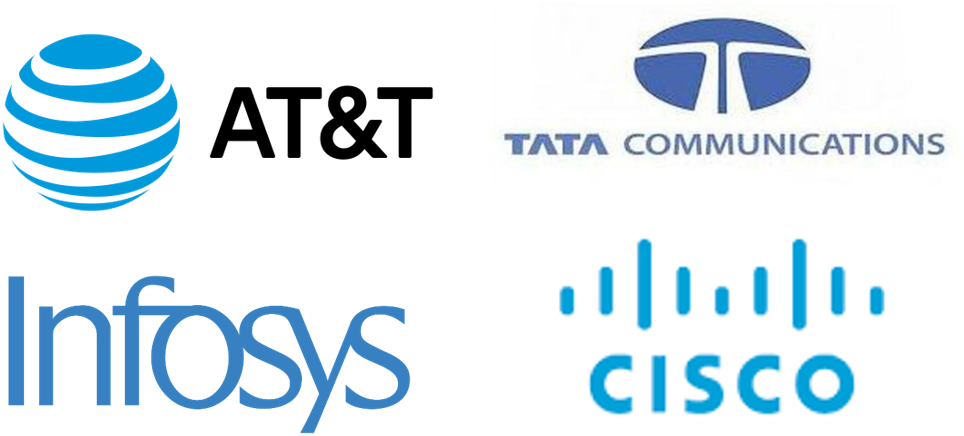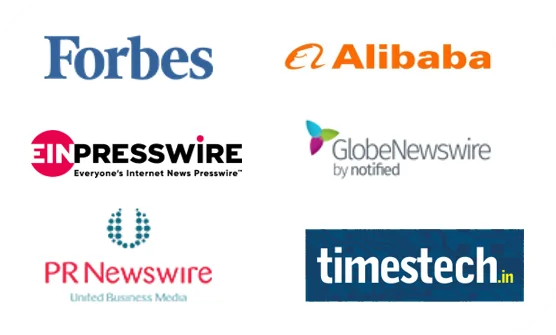Market Overview:
"The global smartphone LiDAR market was valued at US$ 1.9 billion in 2024 and is expected to register a CAGR of 14.5% over the forecast period and reach US$ 6.4 billion in 2033."
|
Report Attributes |
Details |
|
Base Year |
2024 |
|
Forecast Years |
2025-2033 |
|
Historical Years |
2021-2024 |
|
Smartphone LiDAR Market Growth Rate (2025-2033) |
14.5% |
Lidar is a range-finding technique that involves directing a laser towards an object or surface and measuring the time it takes for the reflected light to return to the receiver. A laser, either in pulse or continuous wave mode, is emitted from a transmitter, and the energy reflected back is detected. By calculating the time of travel (ToT) of the laser, the distance between the transmitter and the reflector can be precisely determined.
Initially marketed as "LiDAR scanners" for iOS devices and "time-of-flight depth cameras" (ToF cameras) for Android, these sensors were primarily aimed at enhancing photo quality, such as improved camera focus and bokeh effect, and enabling augmented reality applications. However, their capabilities extended beyond these uses, proving to be valuable for scientific applications as well.
LiDAR sensors in smartphones are predominantly utilized to enhance photography through depth scanning capabilities. However, this versatile technology extends its application potential, presenting numerous new opportunities. The growing advertising efforts by manufacturers promoting LiDAR scanners for iOS devices and time-of-flight depth cameras (ToF cameras) for Android are expected to drive the demand for smartphone LiDAR.
Smartphone LiDAR Market Trends and Drivers:
Better Quality of Photos: With Apple's introduction of a LiDAR scanner in the iPhone 12 Pro, the adoption of this technology is anticipated to increase in the future. The primary application of LiDAR in smartphone cameras is to recognize faces and generate 3D models of the environment. Consequently, LiDAR sensors are primarily utilized to enhance photography and capture better photos.
3D Scanning & 3D Models: The widespread use of detection sensors in smartphones has led to a revolutionary impact on the real estate industry through 3D scanning. The integration of LiDAR sensors by Apple in their products has been a major catalyst for this advancement. LiDAR, functioning as a pulsed laser with nanosecond speeds, enables the creation of highly accurate 3D models, surpassing the capabilities of a standard camera.
Application in Augmented Reality (AR): The primary application of LiDAR technology is in augmented reality (AR) where it finds widespread use. Numerous companies, including Facebook, Snapchat, Microsoft, and potentially Apple, are exploring technologies that blend real and virtual elements, such as augmented reality glasses. With such advancements, LiDAR technology is anticipated to take center stage in the smartphone market in the coming years.
Smartphone LiDAR Market Restraining Factors:
High Cost of Integration: The high cost of smartphone LiDAR technology can be a significant hindrance to its market growth. Implementing LiDAR sensors in smartphones requires advanced components and precision engineering, which can increase the overall cost of the devices. As a result, smartphones equipped with LiDAR tend to be positioned in the higher price range, making them less accessible to budget-conscious consumers.
Lack of Awareness Among Consumers: The lack of awareness among consumers about the benefits and functionalities of smartphone LiDAR can also impede its adoption. Many users may not fully understand the potential applications of LiDAR technology beyond improved photography and augmented reality features. As a result, they may not perceive the added value of investing in a smartphone with LiDAR capabilities, especially if the cost is significantly higher than standard smartphone models.
Size & Form Factor: Engineering issues arise when LiDAR sensors are integrated into the small, sleek design of smartphones. It can be challenging for manufacturers to ensure that the LiDAR components integrate flawlessly into the device's design without sacrificing other crucial features and functionality.
Smartphone LiDAR Market Opportunities:
Integration into Metaverse: In 2022, the concept of the Metaverse brought about a fresh perspective on the importance of 3D sensing technologies in the market. The Metaverse relies on advanced 3D sensing technologies like virtualized worlds and digitization, along with interactive techniques such as eye and lip tracking, to create immersive virtual experiences and interactions.
Emerging Applications in Multiple Industries: In addition to its applications in scientific and engineering domains, LiDAR technology finds extensive use in various fields, including the evaluation of food quality, healthcare, and more. It has been integrated with advanced technologies to enhance people's health and well-being. Apple, for instance, plans to leverage LiDAR to enhance the augmented reality capabilities of its smartphones. However, this technology also holds significant potential to pave the way for numerous other technological advancements that are of great interest to healthcare providers and other industries.
Positioning as a Photography Enhancer: LiDAR-equipped smartphones are currently employed predominantly for enhancing picture quality through depth scanning techniques. Nevertheless, the versatile nature of this technology presents a plethora of other potential applications, leading to new opportunities on the horizon. The rising promotion and marketing efforts by manufacturers of LiDAR scanners for iOS and time-of-flight depth cameras for Android devices are expected to drive the demand for smartphone LiDAR even further.
Indoor Navigation & Mapping: LiDAR-enabled smartphones can help with indoor navigation and mapping, making it simpler for users to move around vast interior locations like malls, terminals, and museums. Applications for location-based services and marketing can especially benefit from this.
Smartphone LiDAR Market Segmentation:
By Operating System:
- iOS
- Android
By Technology:
- Time of Flight (ToF)
- Structured Light
By Price Range:
- Premium
- Mid-Range
Smartphone LiDAR Market, By Region:
North America:
- United States
- Canada
Europe:
- Germany
- The U.K.
- France
- Spain
- Italy
- Russia
- Poland
- BENELUX
- NORDIC
- Rest of Europe
Asia Pacific:
- China
- Japan
- India
- South Korea
- ASEAN
- Australia & New Zealand
- Rest of Asia Pacific
Latin America:
- Brazil
- Mexico
- Argentina
Middle East & Africa:
- Saudi Arabia
- South Africa
- United Arab Emirates
- Israel
Due to the rapidly increasing number of smartphone users, rising disposable income, and increased interest in cutting-edge technologies, the Asia-Pacific region is the dominant market for smartphone LiDAR adoption. India, China, Japan, South Korea, and other nations are anticipated to play a significant role in the market. The booming e-commerce and gaming sectors in the area, along with the rising acceptance of AR and VR applications, are anticipated to fuel a demand for smartphones with LiDAR sensors. The ability to manufacture products and the region's emphasis on smart city efforts may also encourage the use of LiDAR technology in a range of industrial and urban applications.
Due to the presence of top technological companies and early adopters of cutting-edge mobile technologies, North America is anticipated to be a large market for smartphone LiDAR. Smartphones with LiDAR capabilities have taken up quickly in the region, especially in the United States and Canada. Increased interest in 3D scanning capabilities, improved photographic features, and the popularity of augmented reality applications all contribute to the need. The region's strong emphasis on technical innovation and improvements in sectors like gaming, entertainment, and automotive also helps to fuel the expansion of the smartphone LiDAR market in North America.
Due to the region's large smartphone user base, as well as the growing desire for improved AR experiences and 3D scanning applications, Europe is another attractive market for smartphone LiDAR. Smartphones with LiDAR capabilities are anticipated to be widely adopted in nations like the Nordics, Germany, the UK, and France. Furthermore, LiDAR integration in autonomous vehicle and industrial automation applications is made possible by Europe's robust automotive and industrial industries.
The smartphone LiDAR market in Latin America is expected to expand steadily as the continent gradually adopts LiDAR technology. Due to the growing popularity of augmented reality (AR) applications and developments in digital entertainment, nations like Brazil, Mexico, and Argentina are anticipated to be among the first to adopt smartphones with LiDAR technology. The demand for better photography, videography, and augmented reality experiences is projected to drive the adoption of LiDAR technology as smartphone usage in the region rises.
The smartphone LiDAR market is anticipated to gradually expand in the Middle East and Africa area. Due to their innovative digital initiatives and growing smartphone user bases, nations like the United Arab Emirates, Saudi Arabia, and South Africa are poised to take the lead in the adoption of smartphones with LiDAR technology. Smartphone LiDAR integration may be facilitated by the region's enthusiasm in cutting-edge technologies for uses in entertainment, gaming, and tourism.
Leading Companies in Smartphone LiDAR Market & Competitive Landscape:
The landscape in the global smartphone LiDAR market is characterized by presence of several key players, thus adding to the level of competitiveness. These companies focus on technological advancements, product innovation, and strategic collaborations to gain a competitive edge. Market competition is driven by factors such as pricing, product performance, customer service, and global market reach, leading to a dynamic and evolving competitive environment.
Company List:
-
Sony Corporation
-
Lumentum Holdings Inc.
-
ams-OSRAM AG
-
Apple Inc.
-
Samsung Electronics Co., Ltd.
-
Huawei Technologies Co., Ltd.
-
Sunny Optical Technology
-
Viavi Solutions Inc.
-
LG Innotek
-
STMicroelectronics
Research Scope
|
Report Metric |
Report Details |
|
Smartphone LiDAR Market Size available for the years |
2021-2033 |
|
Base Year |
2024 |
|
Forecast Period |
2025-2033 |
|
Compound Annual Growth Rate (CAGR) |
14.5% |
|
Segment covered |
By Operating System, Technology, Price Range, and Region |
|
Regions Covered |
North America: The U.S. Canada Latin America: Brazil, Mexico, Argentina, Rest of Latin America Asia Pacific: China, India, Japan, Australia New Zealand, ASEAN, Rest of Asia Pacific Europe: Germany, The U.K. France, Spain, Italy, Russia, Poland, BENELUX, NORDIC,Rest of Europe The Middle East & Africa: Saudi Arabia, United Arab Emirates, South Africa, Egypt, Israel, and Rest of MEA |
|
Fastest Growing Country in Europe |
Germany |
|
Largest Market in Asia Pacific |
China |
|
Key Players |
Sony Corporation, Lumentum Holdings Inc., ams-OSRAM AG, Apple Inc., Samsung Electronics Co., Ltd., Huawei Technologies Co., Ltd., Sunny Optical Technology, Viavi Solutions Inc., LG Innotek, and STMicroelectronics. |
Frequently Asked Question
What are some key trends driving revenue growth of the global smartphone LiDAR market?
Some key trends driving market revenue growth include Better Quality of Photos, 3D Scanning & 3D Models and Application in Augmented Reality (AR), among others. Positive changes in these Smartphone LiDAR market trends are expected to propel market growth.
Which industries are the primary consumers of smartphone LiDAR?
In addition to its applications in scientific and engineering domains, LiDAR technology finds extensive use in various fields, including the evaluation of food quality, healthcare, and more.
What are some factors impacting the competitive landscape of the global smartphone LiDAR market?
The competitive landscape is influenced by factors such as technological advancements, product innovation, pricing strategies, customer service, global market reach, and strategic collaborations among key players.
How can I obtain more information about the global smartphone LiDAR market report?
To obtain more information about the global smartphone LiDAR market report, you can fill in the form provided to request a sample. Leave your contact details, and a research team member or concerned person will get in touch with you at the earliest to provide additional details and address any specific queries you may have.
What is the expected growth rate of the global smartphone LiDAR market?
The expected growth rate of the global smartphone LiDAR market is projected to be 14.7 % during the forecast period.

